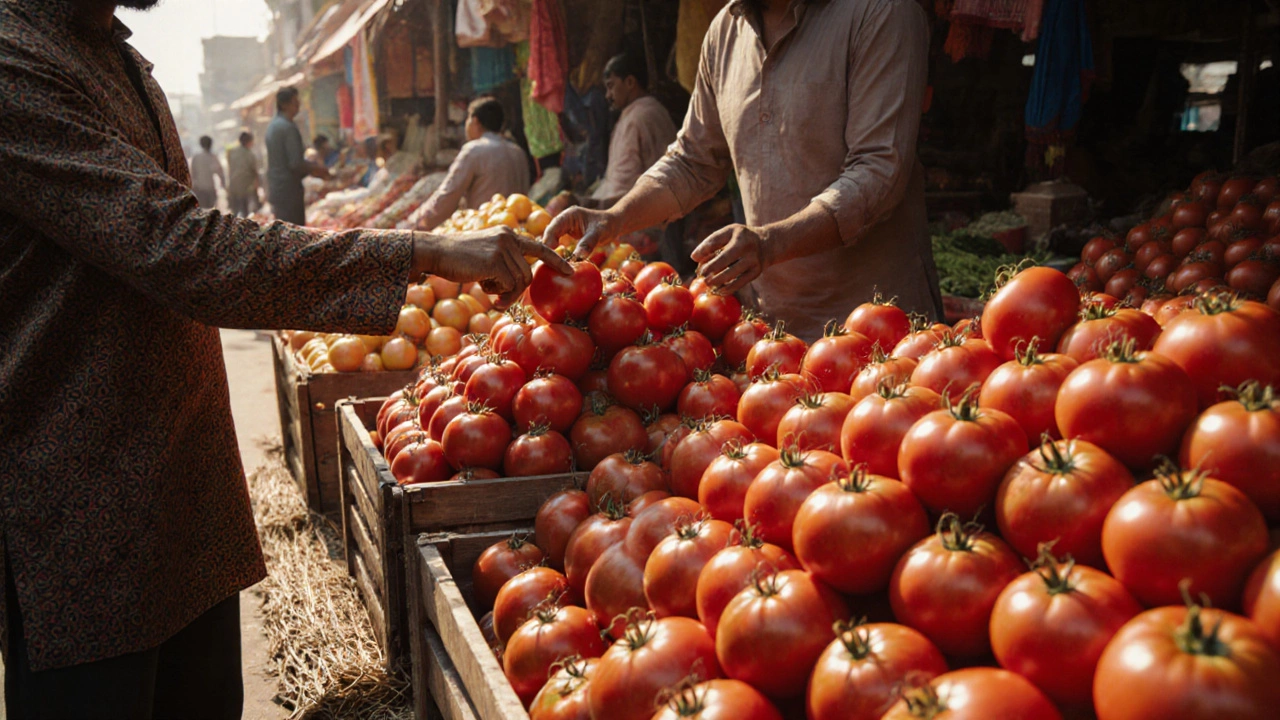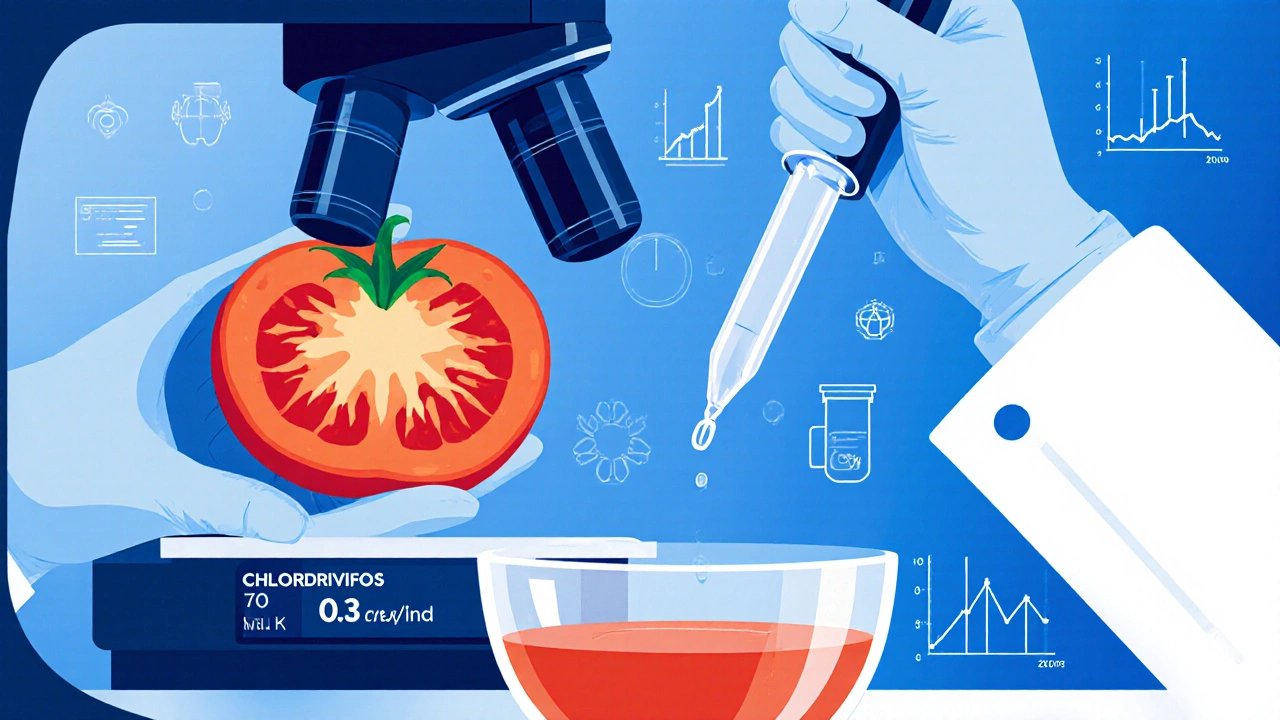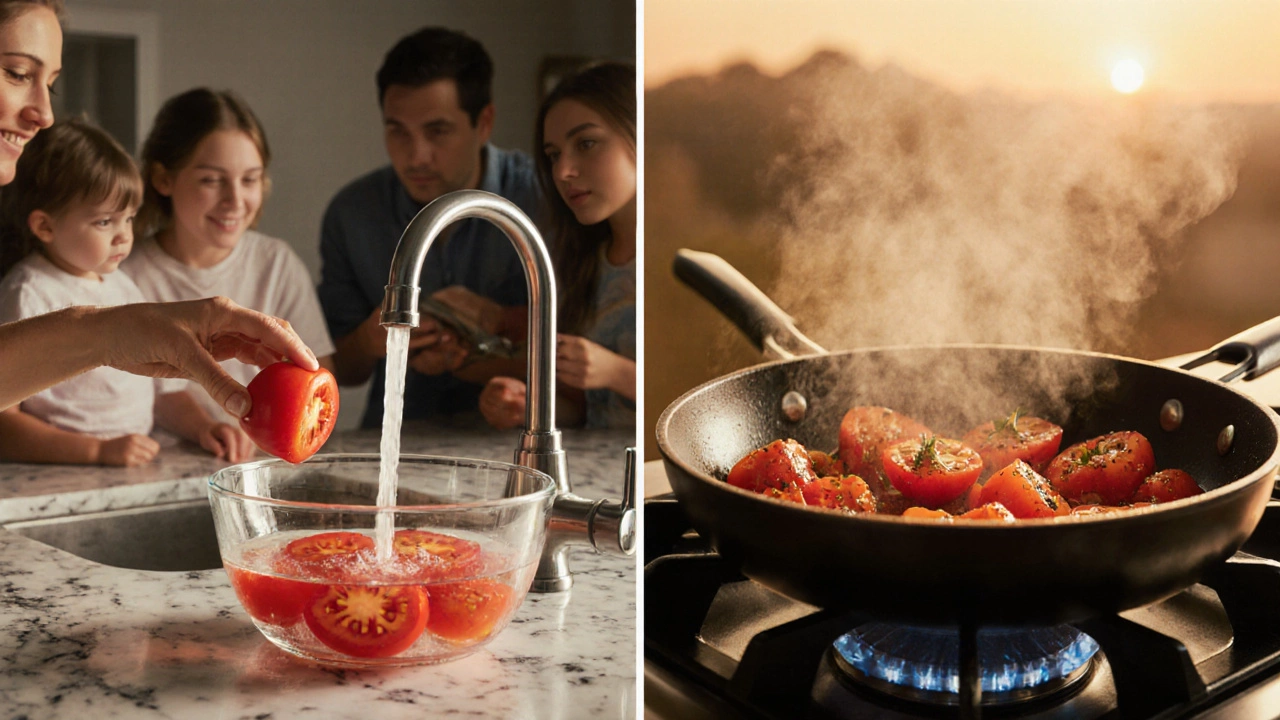Are Tomatoes Safe to Eat in India? Expert Guide to Healthier Choices

Tomato Safety Checker
Check Tomato Safety
Enter contaminant levels to determine if they're within Indian safety standards.
Key Takeaways
- Most tomatoes sold in Indian markets meet the legal limits for pesticide residues and heavy metals.
- Seasonal spikes in contamination are usually linked to improper post‑harvest handling, not the fruit itself.
- Choosing firm, bright‑red tomatoes, buying from trusted vendors, and washing thoroughly cut the risk dramatically.
- Organic certifications and lab‑tested batches give the highest assurance of safety.
- Regulators such as the Food Safety and Standards Authority of India (FSSAI) conduct regular surveys and enforce Maximum Residue Limits (MRLs).
What “tomato safety” really means
When people ask “tomato safety in India?” they are usually worried about three things: pesticide residues, heavy‑metal contamination, and microbial spoilage. Tomato is a fruit that belongs to the Solanaceae family and is widely used as a vegetable in Indian cooking grows in a variety of climates, from the plains of Punjab to the hilly terraces of Himachal. Because it is cultivated year‑round, farmers often use chemical aids to protect the crop from pests and diseases.
Pesticides - the biggest headline
India ranks among the top ten countries for pesticide use per hectare. The most common chemicals on tomatoes are organophosphates (like chlorpyrifos), carbamates, and newer neonicotinoids. Pesticide refers to any substance employed to kill or deter insects, weeds, fungi, or other organisms that threaten crops residues are measured against a legal benchmark called the Maximum Residue Limit (MRL). The Maximum Residue Limit (MRL) for chlorpyrifos on tomatoes is 0.5mgkg⁻¹ according to the latest FSSAI Gazette.
National surveys conducted in 2023 and 2024 showed that about 87% of sampled tomatoes fell below the MRL for all tested pesticides. Roughly 10% had residues between 0.5 and 1.0mgkg⁻¹, which is still considered “acceptable” under the “action‑level” category that triggers a follow‑up test rather than a market ban. Only 3% exceeded the limit, often from small‑scale farms that lacked access to proper training.

Heavy metals and mycotoxins - the silent risks
Besides pesticides, heavy metals such as lead (Pb) and cadmium (Cd) can accumulate in soil, especially near industrial zones. Heavy Metal refers to metallic elements with a high atomic weight that can be toxic to humans at low concentrations limits for tomatoes are set at 0.1mgkg⁻¹ for lead and 0.05mgkg⁻¹ for cadmium by the FSSAI. Recent testing in Delhi’s wholesale markets recorded average lead levels of 0.03mgkg⁻¹ - well under the limit.
Mycotoxins, especially aflatoxin B1, are produced by Aspergillus fungi when tomatoes are stored in damp conditions. Aflatoxin is a potent carcinogen commonly found in improperly stored grains and nuts, and occasionally in over‑ripe tomatoes is regulated at 5µgkg⁻¹. A 2022 study of tomatoes from Haryana’s Kharif season found aflatoxin in 2% of samples, all below the legal threshold.
Microbial threats - why washing matters
Pathogenic bacteria such as E. coli is a group of bacteria that can cause foodborne illness when ingested in large numbers and Salmonella occasionally survive on the skin of tomatoes, especially if they are handled on unclean surfaces. The Center for Disease Control (CDC) records indicate that roughly 15% of Indian food‑borne outbreaks linked to fresh produce involve tomatoes, but most cases are traced back to cross‑contamination in kitchens rather than the fruit itself.
Regulatory framework - who watches the tomatoes?
The Food Safety and Standards Authority of India (FSSAI) is the primary body that sets limits, conducts random market sampling, and publishes annual “Food Safety Survey” reports. Its “Food Recall” portal lists any batch of tomatoes pulled from shelves due to contamination. In 2023, a recall was issued for a batch from Maharashtra after it exceeded the chlorpyrifos MRL by 1.2mgkg⁻¹ - a rare, isolated incident.
How to pick the safest tomatoes at the market
- Look for firm, glossy skins. Soft spots often signal internal decay that can harbor microbes.
- Choose tomatoes with a uniform bright‑red color; green‑ish or overly yellow fruits may be underripe and more likely to be treated with growth‑regulating chemicals.
- Buy from vendors who store tomatoes off the ground and keep them away from raw meat or fish.
- If you can, ask for the “batch test” certificate. Some larger supermarkets display QR codes linking to the latest FSSAI test results.
- Prefer “organic” labeled tomatoes that carry the Organic Tomato certification indicates the produce was grown without synthetic pesticides or fertilisers tag, especially for children’s meals.

Washing, blanching, and cooking - practical steps to reduce risk
Simple kitchen habits cut exposure dramatically:
- Rinse under running water for 30 seconds. Use a soft brush for larger varieties like beefsteak to dislodge soil.
- Soak in a solution of 1% white vinegar (10ml vinegar per litre of water) for two minutes, then rinse. The mild acidity helps break down pesticide film.
- If you’re making curries, sauté tomatoes for at least five minutes. Heat degrades most organophosphate residues and kills surface bacteria.
- For raw salads, consider a quick blanch (boil for 30seconds and plunge into ice water). This step reduces microbial load without compromising texture.
When extra caution is needed
Imported tomatoes, especially those arriving via sea freight from countries with less stringent MRLs, can carry higher residue levels. Always check the packaging for “imported” labels and prefer domestic produce during peak seasons (March-June and September-November). In monsoon months, humidity spikes can foster fungal growth; buying smaller batches and refrigerating within 24hours mitigates aflatoxin formation.
Bottom line for everyday shoppers
Overall, the data show that the majority of tomatoes sold across India are safe when you follow basic selection and preparation practices. Regulatory oversight, combined with growing consumer awareness, has pushed residue levels down over the past decade. By buying from reputable sources, washing correctly, and cooking when possible, you can enjoy tomatoes-whether in a fresh raita or a sizzling masala-without worrying about health hazards.
| Contaminant | Indian MRL (mgkg⁻¹) | Typical Found Level in Surveys | Potential Health Effect |
|---|---|---|---|
| Chlorpyrifos | 0.5 | 0.2-0.8 (average 0.3) | Neurological symptoms at high doses |
| Lead (Pb) | 0.1 | 0.02-0.04 | Kidney damage, developmental delays |
| Cadmium (Cd) | 0.05 | 0.01-0.03 | Bone demineralisation, cancer risk |
| Aflatoxin B1 | 0.005 (5µgkg⁻¹) | 0.001-0.004 | Liver cancer |
| E. coli (cfu/g) | Not applicable (zero tolerance) | 0-10 in 5% of samples | Food‑borne illness |
Frequently Asked Questions
Are tomatoes from street vendors unsafe?
Most street‑vendor tomatoes meet the same legal limits as those in supermarkets, but storage conditions can be poorer. Choose firm, clean‑looking fruits and wash them thoroughly. If the vendor offers a recent inspection sticker, that adds confidence.
What is the safest way to clean tomatoes at home?
Rinse under running water, gently rub with a soft brush, then soak in a 1% vinegar solution for two minutes. Rinse again and pat dry. This removes most pesticide films and reduces surface bacteria.
Do organic tomatoes guarantee zero pesticide residues?
Organic certification restricts synthetic pesticides, but natural compounds like neem oil are allowed. Residues are usually far below the MRL, but “zero” cannot be guaranteed. Lab‑tested organic batches offer the highest assurance.
How often does FSSAI recall tomatoes?
Recalls are rare-about one to two per year nationwide, mainly due to isolated pesticide‑overuse incidents. The FSSAI website lists each recall with batch numbers and distribution details.
Can cooking remove pesticide residues?
Heat degrades many organophosphate and carbamate pesticides. Sautéing or boiling tomatoes for five minutes reduces residues by up to 60%. However, some chemicals are heat‑stable, so washing remains essential.